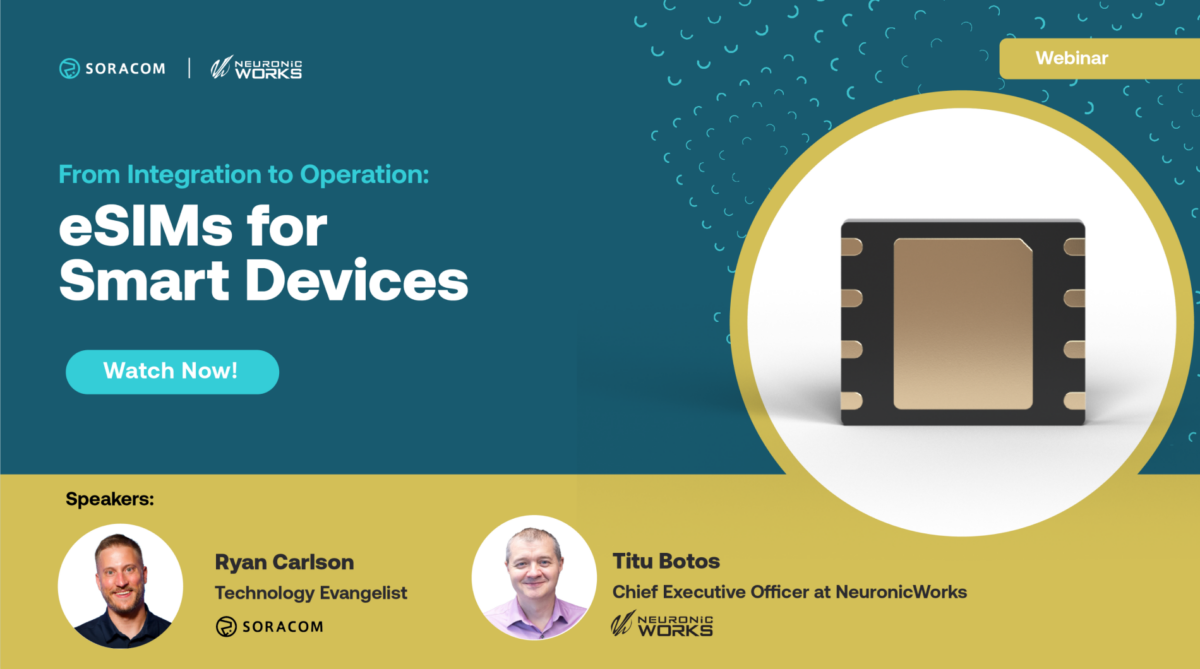How Does an IoT eSIM Card Work?

Every IoT project that is powered by cellular connectivity needs a SIM card, which essentially serves as an identifier to your chosen carrier, enabling you to seamlessly access their network.
However, what if you are undecided on which carrier you want to partner up with? After all, if you own a smartphone, you know that traditional telecommunications agreements are often accompanied with strict commitments at long terms.
Better yet, what if you plan on taking your SIM-powered device to another country? With no ability to remotely change to another carrier, you will be stuck paying exorbitant roaming charges for borrowing another carrier’s coverage that could very well have been yours.
Alternatively, you could cancel your agreement with Carrier A for Carrier B, however, that would require waiting for your new SIM card to be delivered in the mail so you can manually input it into your device. Plus, once you return from your trip to another country, you would face a similar problem and would need to go back to Carrier A for local network coverage.
Thanks to the GSMA, this doesn’t have to be the world you live in.
What is an eSIM Card?
eSIM technology is exactly what it sounds like — an electronic eSIM card that is embedded into your device during the manufacturing process. Touted as the next generation of cellular communications, this new development provides IoT and M2M markets with countless benefits, including operational efficiency, design flexibility, device security, seamless scalability and more.
Operational Efficiency
Whether it’s a smartphone or an IoT GPS tracker, having an embedded eSIM enables users to remotely switch carrier profiles on demand. Not only does this save time and money from physically swapping SIM cards, but it also enables IoT project managers to seamlessly sync up each device with each carrier based on device location at any given time.
This can be particularly handy when you’re migrating thousands of IoT devices to another country and need to quickly connect them to a new network carrier.
What’s more, eSIM technology even supports dual-SIM functionality, which can be especially convenient for IoT and M2M projects that are staying within two countries at any given time.
Design Flexibility

Plus, not only are eSIM cards smaller — and more power efficient — than SIM cards, but since they’re embedded during manufacturing, they don’t require a tray within the device to support them.
While this may seem like a minor detail, many IoT markets — especially wearables — benefit greatly from reduced device size which could translate into greater processing power, more battery life or simply less overall weight. For this reason, many new consumer devices are choosing to use eSIM cards over the older SIM cards, including the Google Pixel 2 and both the Apple Watch Series 3 and 4.
Device Security
Another benefit of having eSIM cards embedded within the device is that it limits any access to external threats that could compromise the device’s security. This is especially important for IoT devices that are being used in the medical field, where their functionality could make the difference between life and death.
With over 90% of cars expected to be IoT-connected by 2040, the connected cars movement is another prime IoT and M2M use case for eSIM technology. As a mobile IoT asset, automobiles are a natural fit for cellular connectivity but also for eSIM cards in the frequent cases where they travel outside of single-carrier network coverage.
Continuous connection to the internet allows IoT-connected cars to transmit performance data in real time where it can be analyzed. Plus, since it’s an embedded part of the vehicle, the eSIM can provide pinpoint accurate location data in the case of an emergency.
Seamless Scalability
Most IoT projects aren’t developed for a single city or region. They have larger ambitions, whether its a single use case that is replicated across the world or one project that expands to supply global demand. eSIM technology enables either of these IoT project types to thrive by providing the foundation for users to securely and remotely manage and monitor IoT devices en masse with minimum physical handling.
Which eSIM Card Should I Choose?
Regardless of your industry, eSIM technology provides the flexibility, performance and scalability that can set your project apart from the competition. However, which eSIM card should you pair with your device? Also, what cellular connectivity would provide the most value to your IoT project?
Soracom understands the unique needs of our clients which is why have designed eSIM cards that are built specifically for IoT and M2M applications. There’s a reason why 50% of our clients are using eSIM technology to power their IoT projects.
Plus, we know that just like traditional SIM cards are beginning to decline in popularity, so is the commitment-laden pricing model that keeps clients locked in.
Our revolutionary “pay-as-you-use” model means that you pay for as much data as your eSIM uses; nothing more, nothing less. Without any minimum commitments, your IoT project can increase or decrease its data usage without worrying about wasting unused data or exorbitant overage charges.
In addition, we’re helping our 15,000 customers around the world scale their IoT project with comprehensive cloud-based services that range from device and protocol management, to cloud integration, to private IoT networking, all available through our intuitive web management console.Book a demo today to learn more about the value of intelligent Soracom cellular connectivity.





